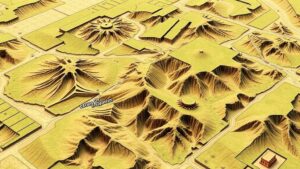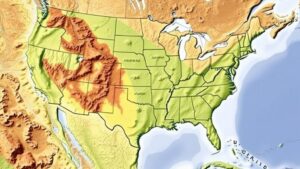Mining Historical Agricultural Fairground Maps for Rural Relic Discoveries
Mining Historical Agricultural Fairground Maps for Rural Relic Discoveries
Historical agricultural fairground maps serve as rich repositories of data, offering vital insights into rural communities social and economic tapestry throughout different periods. By analyzing these maps, researchers can uncover hidden aspects of regional history, facilitating the discovery of relics that reflect agricultural practices, cultural gatherings, and demographic shifts. This article explores methodologies for extracting information from these maps, examines notable case studies, and discusses the implications of findings in the context of rural heritage preservation.
Understanding Agricultural Fairgrounds in Historical Context
Agricultural fairs have been integral to rural American life since the early 19th century, with their roots traced back to the 1820s. were venues for showcasing livestock, agricultural products, and innovations. The historical fairground maps, often produced for promotional purposes or logistical planning, include information on fairground layouts, location of buildings, types of exhibits, and even routes of parades.
For example, the Illinois State Fair, first held in 1853 in Springfield, has generated numerous maps over its long history, illustrating the evolution of agricultural practices and community engagement. As agricultural fairs gained popularity, these maps became critical documents encapsulating local identity, regional economics, and societal trends.
Methodologies for Mining Historical Maps
Mining historical fairground maps requires a multi-disciplinary approach, combining geological surveys, archeological techniques, and digital technologies. following methodologies provide a framework for effective analysis:
- Geospatial Analysis: Geographic Information Systems (GIS) software can overlay historical maps with current geographical data to pinpoint changes in land use, infrastructure, and population density.
- Field Surveys: Physical surveying of fairground sites allows for the identification of relics, structures, or artifacts that may be associated with historical events depicted in the maps.
- Archival Research: Consulting archives, libraries, and county records can provide additional context and support for the findings derived from the maps.
Case Studies of Relic Discoveries
Several successful instances illustrate the usefulness of mining historical agricultural fairground maps for relic discovery:
In 2017, a team at Purdue University utilized maps from the Indiana State Fair dating back to 1852. By combining GIS technology with field surveys, they identified remnants of old exhibition buildings that had been largely forgotten. This discovery reinforced the significance of the fair in Indiana’s agricultural evolution and provided a site for further archaeological study, which revealed artifacts such as vintage farm tools and advertisement materials from the late 19th century.
Another compelling case emerged from the historical maps of the New York State Fair, where researchers discovered traces of former livestock pavilions. Detailed mapping led to the uncovering of foundational remnants and tools used in breeding practices, offering insights into rural agricultural advancements.
Implications for Rural Heritage Preservation
The findings gained from mining agricultural fairground maps have broader implications for heritage preservation, as they serve as a crucial reminder of the socio-economic drivers of rural life. By understanding how these fairs influenced agricultural practices and community identity, preservationists can advocate for historical sites that embody rural culture. Such advocacy is vital in a landscape increasingly threatened by urban development.
Also, these discoveries can contribute to educational programs in local communities, fostering a sense of pride and historical awareness among residents. Future initiatives could focus on diverse documentation of these fairs, capturing modern contexts while ensuring that their historical significance is not lost to time.
Conclusion and Actionable Takeaways
The analysis of historical agricultural fairground maps provides invaluable insights into rural economies and cultural heritage. Researchers and preserverationists alike can leverage this unique resource to enhance understanding of regional histories and encourage public engagement with local heritage. As industries and communities evolve, so too should our methodologies for documenting and preserving those histories.
To capitalize on these findings, practitioners are encouraged to:
- Explore local archives for historical fairground maps pertinent to their areas.
- Use GIS technology to connect historical maps with current data for comprehensive studies.
- Engage local historical societies and universities to develop collaborative initiatives aimed at excavating and preserving rural relics.
As we delve into the past through these maps, we enrich our understanding of rural narratives and enhance the fabric of our communities.



